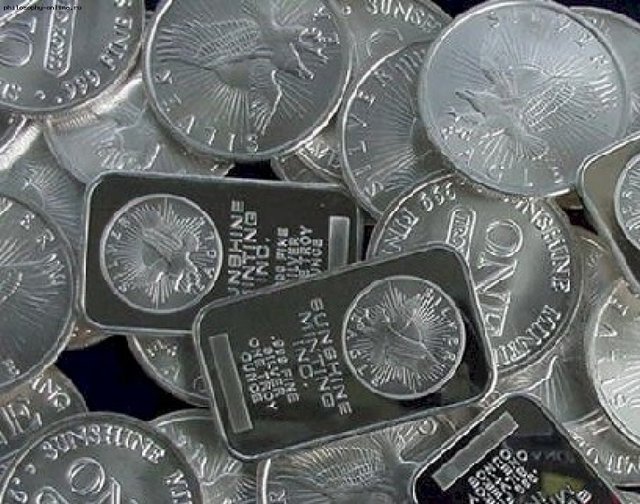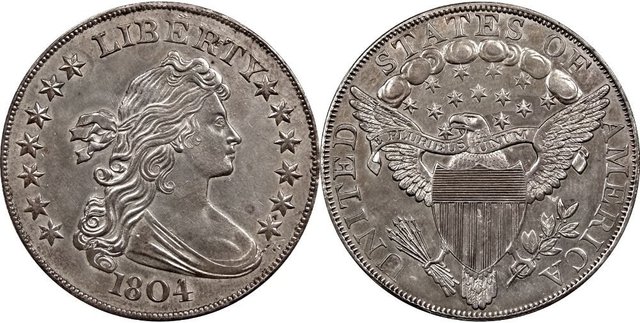AN IN-DEPTH HISTORY OF SILVER !!!!!! YOU SHOULD KNOW THIS !!!!!!
 In ancient times, the first metals discovered and used were gold, copper and silver, in that
In ancient times, the first metals discovered and used were gold, copper and silver, in that
order. Among the ashes of fire pits used by Stone Age peoples are the remains of
metallurgical work. Discoverers associated the yellow color of gold with the sun. In turn,
the white brightness of silver became associated with the moon. The Greek word argyros
is derived from a Sanskrit root mean shining white. In Latin, the moon is known as luna.
The surgical cauterizer made from silver nitrate and niter is still known as lunar caustic
today. The later Latin name argentum comes from an Aryan root meaning white and
shining. The word silver is of Gothic origin meaning shiny white. The optical properties
of silver are distinctive because of its exceptionally high reflectivity and very low
emissivity.
For thousands of years, silver has been highly regarded as a versatile healing tool. In
ancient Greece, Rome, Phoenicia and Macedonia, silver was used extensively to control
infections and spoilage. Hippocrates, the “Father of Medicine,” taught that silver healed
wounds and controlled disease. Around 400 B.C., he listed as a singular treatment for
ulcers “the flowers of silver alone, in the finest powder.” Herodotus describes how the
King of Persia carried with him boiled water in silver flagons to prevent sickness. In 69
B.C., silver nitrate was described in the contemporary Roman pharmacopoeia. Pliny the
Elder, in his survey of the world’s knowledge, Natural History (78 A.D.), states in Book
XXXIII, Section XXXV, that the slag of silver “… has healing properties as an ingredient
in plasters, being extremely effective in causing wounds to close up…”
The popularity of medicinal silver especially arose from 702 A.D. through 980 A.D.
throughout the Middle East where it was widely used and esteemed for blood
purification, heart conditions, and controlling halitosis. Paracelsus (circa 1520)
extensively incorporated silver medicinally, and later Caradanus, Pareus and Sala also
used it. Angelus Sala used silver nitrate to successfully treat chorea, tabes dorsalis
(syphilis), and “doubtably epilepsy”. These crude forms of silver were reported by Sala to
rarely cause the bluish hue of skin discoloration due to its overuse (Argyria). It is widely
thought that during the Middle Ages, silver utensils and goblets contributed a bluish hue
to the skin tone of the upper class, resulting in the term “royal blue bloods.” Plausibly the
term “born with a silver spoon in his mouth” was coined during that time for the same
reason, as an attribute for describing the good fortune of health more than having wealth.
These blue bloods were noted to have obtained a measure of protection from the rampant
plagues common to Europe in those centuries. The use of silver to provide bacteria-free
tableware, pacifiers and storage vessels has been practiced throughout history. Today it is
known that metallic silver will dissolve in water to the level of 10-5 g/l, which is toxic to
Escherichia coli and Bacillus typhosus.  Pioneers of the American West would often put a silver dollar into a jar or container of
Pioneers of the American West would often put a silver dollar into a jar or container of
milk to help keep it fresh without refrigeration. They would also drop silver and copper
coins in their barrels of drinking water to combat bacteria and algae. During the wars
with Napoleon, the armies of Tsar Alexander used water casks lined with silver to clean
drinking water from rivers and streams. This practice by the Imperial Russian army was
common through World War I and continued to be incorporated by some units in the
Soviet Army during World War II.
Raulin recorded the first clinical description of the water-cleansing effect by silver in
- He observed that Aspergillus niger could not grow in silver vessels.
Modern Research using the Scientific Method In 1861, Thomas Graham found that
certain solutions would pass through a membrane and others would not. He found a
stable, intermediate state of matter and was able to describe it. Graham discovered that
substances could enter a solution in such a manner that they would exhibit characteristics
quite different from those of a true solution. He applied the term “colloidal” (from kolla =
glue) to this intermediate state, since glue, gelatin, and related substances were the most
obvious to him as being in this unique state.
The Swiss botanist von Nageli recorded one of the amazing discoveries of the 19th
Century in 1869. Von Nageli coined the term “oligodynamic” to describe the
microbiocidal properties of a metal hydrosol (e.g. copper, silver and tin) at minute
concentrations. Silver is unique in its action against micro-organisms.
Recent studies confirm that silver ions are active against bacteria at concentrations as low
as one part per billion in pure water. Silver ions react rapidly with the walls of
prokaryotic cells typical of micro -organisms, whereas the membranes of eukaryotic cells
of mammals strongly resist any effect by silver.
In 1884, the German obstetrician C.S.F. Crede, observed that there was a 79%
relationship between blind children and maternal venereal disease. He subsequently
introduced a prophylactic l% silver nitrate eye solution for newborns for the prevention
of ophthalmia neonatorum. Following its introduction, the incidence of eye disease in
newborns dropped to about 0.2%. His treatment was a milestone in clinical prophylaxis
and became a government regulation throughout most of the world. By 1897, silver
nitrate began to be used in America to prevent blindness in newborns and is still used
today. By 1910, Henry Crookes had documented that certain metals, when in a colloidal
state, had strong germicidal action, but were harmless to human beings. The
oligodynamic concept motivated the development of many antimicrobial processes and
products.
One of the water purification developments that took place in 1928 was the development
of Katadyn silver, described as a porous metallic, spongy mesh that attempts to maximize
surface area. This silver meshwork also contains a small quantity of gold or palladium.
Katadyn silver has been used inside flasks and storage containers and with water filters.
Both the U.S. and Russian space shuttle vehicles use electrified silver and copper water
filtration systems.
Many urologic implements were made of silver and commonly used during the period of
1930 to 1960. This author has a Keyes-Ultzman silver urethral canula designed to reach
the prostatic urethra. The advent of inexpensive stainless steel and improved sterilization
methods greatly diminished the clinical market for silver implements.Picture Source:http://survivingglobalrecession.com/an-in-depth-history-of-silver/#.V8u8x1WLTSE